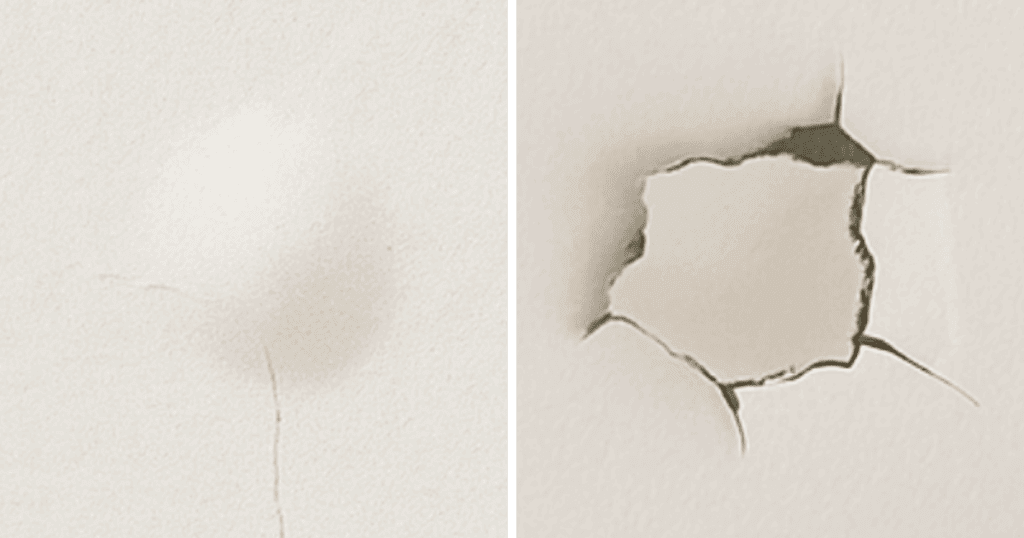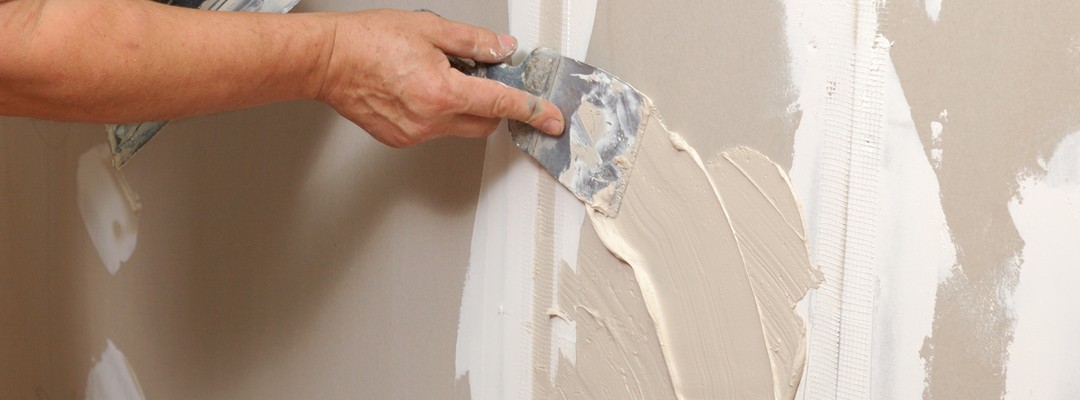Combine the skill of drywall contractors and stylish Interior Painting for a timeless home look.
Important Tips for Effective Drywall Repair and Setup Strategies
Effective drywall fixing and setup requires a mindful approach. Comprehending the kinds of drywall and having the right devices is essential. Proper strategies and exact measurements can greatly affect the outcome. Many overlook necessary steps like taping and sanding, which can make or break the last appearance. As projects proceed, common obstacles may develop that require focus. Checking out these ideas can cause an extra sleek and effective finish.
Recognizing Various Types of Drywall
Comprehending the different sorts of drywall is essential for any type of successful fixing or setup task. Drywall, frequently referred to as gypsum board, is available in several ranges tailored for specific applications. Standard drywall is the most widely used kind, suitable for general interior wall surfaces and ceilings. Moisture-resistant drywall, commonly environment-friendly in color, is developed for areas vulnerable to moisture, such as shower rooms and kitchen areas. Fire-resistant drywall, usually tinted pink or purple, is crafted to hold up against greater temperature levels and is commonly made use of in garages or near heaters. Furthermore, soundproof drywall assists minimize sound transmission, making it appropriate for multi-family homes or taping workshops. Specialty drywall, like concrete board, is utilized in wet locations like showers or bathtub borders. Understanding these types assists in selecting the appropriate material for each project, ensuring longevity and performance out of commission or brand-new installments.
Essential Tools for Drywall Repair and Installation
Having the right devices is important for reliable drywall repair service and installation. A high quality utility blade is essential for reducing drywall sheets specifically. A drywall T-square helps guarantee straight edges, while a taping knife is essential for applying joint compound efficiently over joints. Furthermore, a drywall saw enables reducing out harmed sections or suitable drywall around components.
For hanging drywall, a power drill with drywall screws is crucial, as it makes it possible for safe and fast installation. A degree is likewise crucial to confirm that the drywall is straight and appropriately aligned. Once it has dried, a fining sand block or post sander is important for smoothing out joint compound. A gauging tape is vital for exact dimensions, protecting against waste and making certain an appropriate fit. Equipped with these devices, people can deal with drywall jobs effectively, causing professional-looking results.
Step-by-Step Guide to Fixing Holes and Cracks
When attending to openings and splits in drywall, having the right tools and materials is crucial for an effective repair service. This overview describes the required items and gives a clear, detailed procedure to efficiently restore the surface area. Understanding these elements will assist guarantee a smooth finish and durable results.
Devices and Materials Needed
A well-equipped toolkit is crucial for efficient drywall repair service and installment. Secret tools consist of an energy blade for cutting drywall, a tape step to ensure accurate sizing, and a drywall saw for larger openings. A putty blade is necessary for using joint compound smoothly, while a fining sand block or post sander helps accomplish a seamless coating. For patching, a roll of fiberglass mesh tape or paper tape is necessary to reinforce joints. Additionally, a drill and screws are required for protecting brand-new drywall items. Important materials contain joint substance, guide, and paint to complete the repair work. Having these tools and materials accessible ensures a smoother, extra reliable repair procedure, producing professional-looking outcomes.
Fixing Process Actions
Fixing holes and splits in drywall needs a systematic technique to ensure a seamless surface. The area surrounding the damages needs to be cleansed completely to get rid of dust and particles. Next, for tiny fractures, a putty blade is utilized to use a joint compound equally over the area. For bigger holes, a spot is required; the harmed section is removed, and a brand-new piece of drywall is suited place, secured with screws. As soon as the spot remains in position, joint compound is used to mix the sides. After drying, fining sand the location smooth is essential. Finally, the repaired surface should be topped and repainted to match the bordering wall surface, making certain an unnoticeable fixing.
Techniques for Installing Drywall Panels
Setting up drywall panels needs cautious preparation and precise implementation to assure a expert and smooth surface. Initially, it is necessary to determine the wall surface area accurately and cut the panels to fit, making certain that they straighten with the studs. Placing the panels flat is generally advised, as this can boost the have a peek at this site structural honesty and reduce the number of seams.
Utilizing drywall screws, installers ought to secure the panels every 16 inches along the studs, making certain a firm hold. It is essential to stay clear of overdriving the screws, which can damage the paper surface area. For sides and edges, using an energy blade allows for clean cuts and a snug fit.

Finishing Touches: Taping, Mudding, and Fining sand
When the drywall panels are firmly in location, the following important action entails the complements of taping, mudding, and sanding. Taping is very important for creating a seamless change between panels and concealing joints. A top quality drywall tape, either paper or fiberglass mesh, should be applied over the joints, guaranteeing it adheres appropriately to the mud that will certainly be applied next.
Mudding, or applying joint compound, complies with the taping procedure. This compound fills spaces and ravel the surface. A very first layer must be applied kindly, feathering the edges to mix with the drywall. After the preliminary layer dries, succeeding layers may be needed for a remarkable surface.
Lastly, fining sand is essential to achieve a smooth surface area. A fine-grit sandpaper needs to be used to gently ravel any type of blemishes. Treatment ought to be required to avoid over-sanding, which can harm the drywall - drywall contractors. Appropriately carried out, these finishing touches produce a specialist look ready for paint
Tips for Preserving Your Drywall After Setup
Keeping drywall after installation is essential to maintaining its appearance and architectural integrity. Regular cleansing is needed; dirt and dust can gather, so gentle cleaning with a damp fabric is advised. Homeowners need to also evaluate for any type of signs of moisture or mold and mildew, specifically in high-humidity areas like kitchen areas and shower rooms. If any kind of damage takes place, it is necessary to resolve it immediately to stop additional problems.
Utilizing furnishings pads can assist avoid scrapes or dents from hefty things. In addition, repainting the drywall with a premium, cleanable paint offers an additional layer of protection and makes future cleaning simpler. Stay clear of using unpleasant cleaners or tools, as these can harm the surface. Keeping a steady interior climate with suitable moisture levels will aid prevent contorting or breaking over time. By complying with these ideas, one can assure that drywall remains in outstanding condition for years to come.
Often Asked Questions
The Length Of Time Does Drywall Take to Totally Dry After Setup?

Can I Mount Drywall Over Existing Drywall?
Yes, drywall can be set up over existing drywall, but it is necessary to guarantee the underlying surface is safe and secure and appropriately prepared. This technique can boost insulation and lower installment time, though it may add weight.
What Is the very best Means to Soundproof Drywall?
The very best way to soundproof drywall includes utilizing specialized soundproofing products, such as resistant networks, acoustic caulk, and sound-dampening drywall. These methods successfully lessen audio transmission in between spaces, boosting overall acoustic performance in living spaces.
Exactly how Do I Pick the Right Drywall Density?
To choose the appropriate drywall density, take into consideration the application and area. Criterion residential walls commonly utilize 1/2 inch, while ceilings or specialized areas may need 5/8 inch for extra stamina and soundproofing capabilities.
Exist Eco-Friendly Drywall Options Available?
Yes, environmentally friendly drywall options are readily available. These consist of items made from recycled products, gypsum boards with low unpredictable organic compounds (VOCs), and those utilizing sustainable manufacturing processes, using environmentally-conscious selections for construction and improvement tasks.
Having the right devices is vital for reliable drywall repair service and setup. For hanging drywall, a power drill with drywall screws is indispensable, as it allows safe and secure and quick installation. Secret devices consist of an energy knife for reducing drywall, a tape step to assure exact sizing, and a drywall saw for bigger holes. Yes, drywall can be mounted over existing drywall, yet it is necessary to ensure the underlying surface is safe and sufficiently prepared. The best way to soundproof drywall involves making Related Site use of specialized soundproofing products, such as durable channels, acoustic caulk, and sound-dampening drywall.